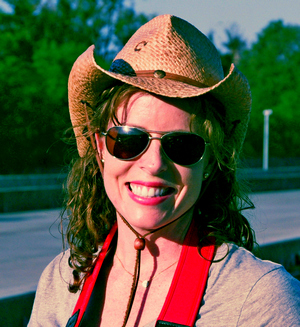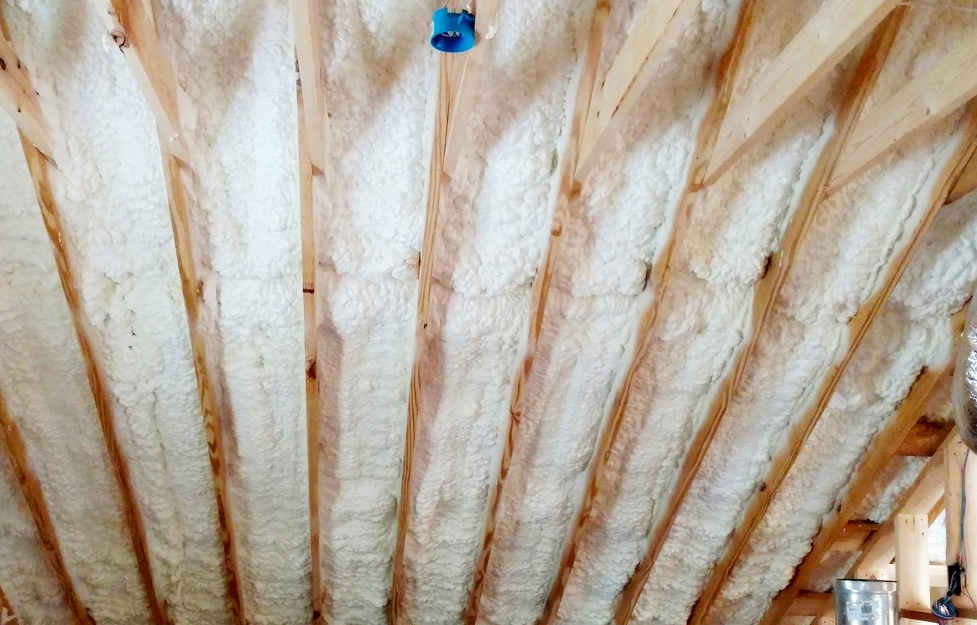08 Sep August 2018
Willis Sinclair Homes
“The Lowcountry’s Premier Custom Home Builder”

We did have a minor traffic problem in Yellowstone National Park.
24 Gabriel Road
Lodge, South Carolina 29082
843 846 2500

August 2018
Number 54
 From the desk
From the desk
of Abbey …
Hello! During the summer months when the heat is high and your home is vacant may be a good time to turn your attention to some “Spring cleaning”! For most people “Spring cleaning”or a “deep clean” happens once a year. When I was younger I felt that Spring cleaning occurred at least 4x a year in my house! I thought the amount of cleaning we did was a reflection on my mom and her love of cleaning, now I wonder if it was just a reflection of how quickly we could get the house dirty enough to make Spring cleaning necessary that frequently!! A big thanks to all those moms who like clean homes, your children will grow up and thank you! I am very grateful to my mom for sure (especially now that I am not doing it 4x/year!)!
The amount of deep cleaning your home needs may depend on what type of home you have. For instance, I have found that hardwood or tile floors tend to have a greater accumulation of dust kitties than carpet. Carpet seems to absorb the dust better or perhaps the dust is unable to travel under furniture as easily on carpet. If you have a cleaner who is able, smaller pieces of furniture can be moved out from the wall, the baseboards wiped and the floor vacuumed before the items are put back.
When it comes to dusting there are areas such as lampshades, dust ruffles, the tops of doors and window casings, picture frames, book shelves and the tops of books, fans, air conditioner registers, even walls get dusty and a dust mop really can help with that!
High areas of traffic in your home are likely going to be the kitchen and laundry room. Did you ever look around the detergent holder in your washer? They get really dirty and gross, but most of them can be cleaned so they look new again! Microwaves are another area that almost always need a good cleaning. Ovens or stove tops are a good areas to hit, but you have to be cautious what detergents and scrubbers are used or you potentially damage any stainless or even the interior of your oven.
If you need any rugs or fabric upholstery cleaned there are companies that can come to your house and clean them. There are even companies that will pick your rugs up and take them away to be cleaned and “shaken” – which is when they put your rug on a machine and it vibrates/shakes the dirt out without damaging the rug. Isn’t it amazing how much dirt goes through a carpet/rug and winds up on the floor sometimes!
One of the most time-consuming, but rewarding things to do is to wipe out your drawers and cabinets. Especially in the kitchen it is amazing how dirty the doors and drawers can get inside and out. In just a couple hours your kitchen can look new again and at little to no cost if you do it yourself!
If you need help finding someone to take care of some spring/deep cleaning items for you please let me know, I am happy to help set it up or pass contact information on to you!
Happy summer and stay cool!
Green Building Ideas
Incorporating green building ideas in your new or remodeled home makes sense for at least two important reasons. First, it conserves our resources and secondly, it saves you money. While there are some green ideas you may not want to consider (using fewer and smaller windows, for example), there are some you may want in your new or remodeled home.
Spray-in Foam Insulation
Heating and cooling represent the largest part of a typical power bill. Reducing the need for heating and cooling by efficient insulation makes a lot of sense and gives a relatively fast payback.
One of the best way to reduce the heating and cooling needs in a new home is to use spray-in foam insulation. There are several reasons this saves you energy costs. First, it is a good insulator. It is as good as fiberglass insulation that is installed perfectly.
Perfectly is the key word for fiberglass insulation because when a wall has wires, pipes or tie down rods in it as many do, it is very difficult to get fiberglass installed around those obstructions without leaving voids or compressing the insulation. Both voids and squeezing fiberglass insulation reduces its thermal resistance. Since foam is sprayed in, it can go behind wires, pipes, tie down rods or any item that may be in the wall cavity.
Spray in foam also blocks air infiltration that may occur at any opening to the outside (electrical outlets or hose bibbs, for example).
Another big advantage of foam insulation is that it is sprayed into the rafters and not placed on the ceiling joists. This keeps the temperature of an attic much closer to the temperature of the conditioned space. Attics with fiberglass insulation get very hot in the summer. That heat can then infiltrate the home. If you have air conditioner components in the attic, needless to say, a cool environment is much better for them.

Foam insulation has been sprayed between these rafters.
Some builders still use blow in insulation in attics. This is easier to install, but less efficient than fiberglass and it gets less thermally resistant as it settles. Foam thermal resistance remains relatively constant over time.
Tankless LP (gas) Water Heater
Heating water typically consumes the second most energy in a home (after heating and air conditioning). A tankless gas water heater can save you money …. usually.
A tankless water heater heats water as it is needed rather than heating a large (50 gallon or so) tank just in case you might need hot water. When you are not using water from a tank system, the tank of hot water just sits there, slowly cools and is reheated.
Switching to a gas tank water heater is better than an electric since gas (LP) is less expensive that electricity for heating water. Still with a gas tank heater, the water is heated, cools and is reheated even if no one is using it.
Another advantage of a tankless water heater is that if you leave for an extended period of time, you don’t have to remember to turn off the water heater. Since no one is using hot water in your absence, no water is heated. When you get home, you have instant hot water. You don’t have to turn on the water heater and wait for it to heat water.
A further advantage of a tankless water heater is that it is smaller than a tank version. Not only is it smaller, but it can even be installed outside your home. (In cold weather, it will run occasionally to prevent freezing.)
There is one possible downside for tankless water heaters. With a tank system, you have only so much hot water. With several people showering, each must limit the length of their shower or the hot water is used and showers become cold. With a tankless system, there is no such situation. As long as you have water and LP gas, you will have hot water. This could encourage loooong showers which are not really energy efficient.
If you do have a tank electric water heater, you may be able to reduce your energy usage by putting a timer on the water heater. If you don’t use hot water after, say 9 pm, the timer could be set to turn off the water heater about that time. It could also be set to turn the water heater on an hour or so before you normally rise and use hot water. Savings are not as dramatic as switching to a tankless system, but the cost to make this change is also much less.
High Efficiency HVAC System
|
From SEER |
To SEER |
Energy Savings |
|---|---|---|
|
14 |
15 |
6.7% |
|
14 |
16 |
12.5% |
|
14 |
18 |
22.2% |
|
16 |
18 |
11.1% |
Energy savings for various SEER ratings
Your HVAC (Heating, Ventilating and Air Conditioning) system is probably the largest consumer of power in your home. The efficiency of the cooling ability of an HVAC system is rated in a SEER (Seasonal Energy Efficiency Rating). The higher the SEER rating, the less energy is used, however the energy reduction is not as dramatic as one would like. Today, the minimum SEER rating allowed is 14.0. A SEER rating of 18 which seems significantly higher than 14 really represents an energy savings of approximately 22%. If a 14 SEER unit uses $200 per month, an 18 SEER would use about $156 per month – a savings of $44 per month during the hot months. As weather moderates, the power usage and savings would drop.
The savings would be $300 to $400 per year in this example.
Often bumping up the SEER rating makes sense, but there is point of diminishing returns where increasing the SEER rating increases the cost of the system enough that savings would never pay for it.
LowE Windows
Most of the heat gain from a home is from the windows. Large windows are very nice and fortunately, there is a way to minimize the gain.
Glass manufacturers are able to put a coating on glass which filters the infrared and ultraviolet portions of light from the sun without blocking the visible light significantly. Infrared light from the sun is basically heat. When you get in your automobile in the summer, it is hot because of infrared energy from the sun. Ultraviolet (UV) light causes items to fade. This coating is known as LowE coating. Some manufacturers offer different levels of LowE coatings. Since the LowE coating is not perfect, the more heat energy is blocked, the more visible light is blocked.
We would be happy to discuss SEER rating options, tankless water heaters and other green options with you. No charge and no obligation, of course.
Willis Sinclair Homes
Need more green ideas? Call us. We can help!

Willis: 843 599 9056
Bill: 843 846 2500
Abbey: 843 599 2302





No Comments